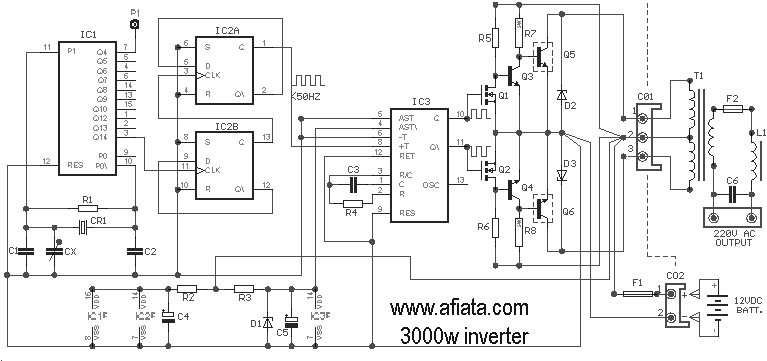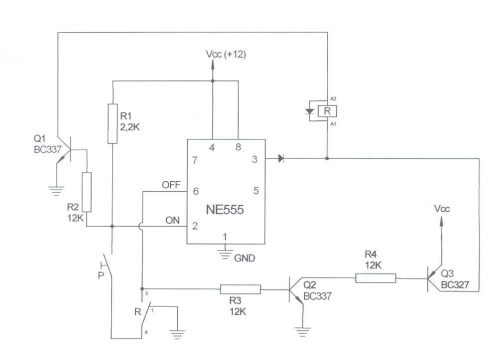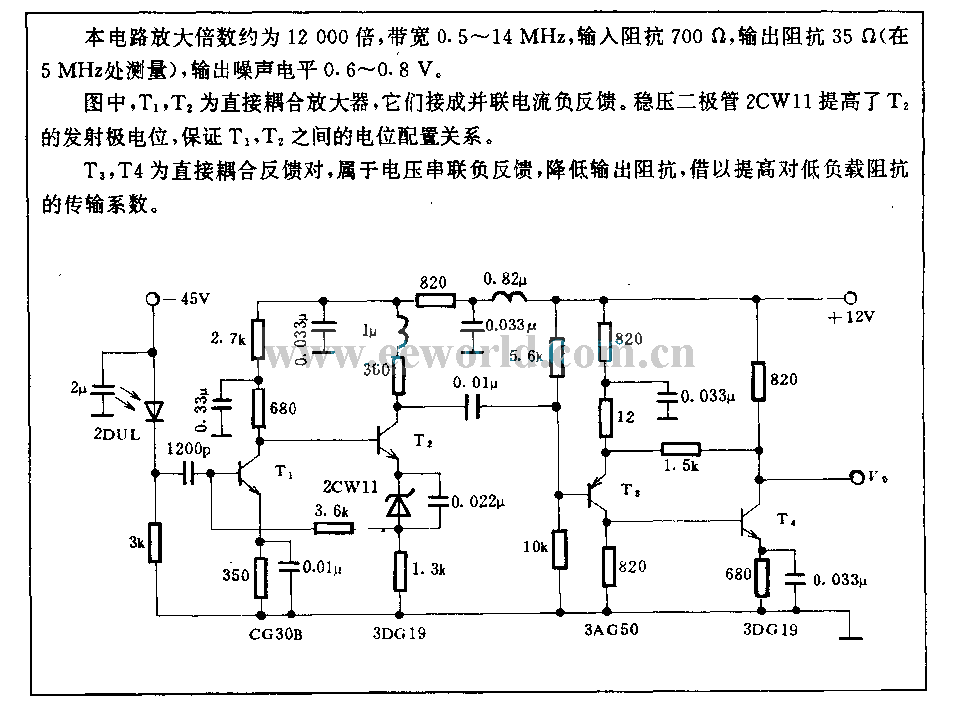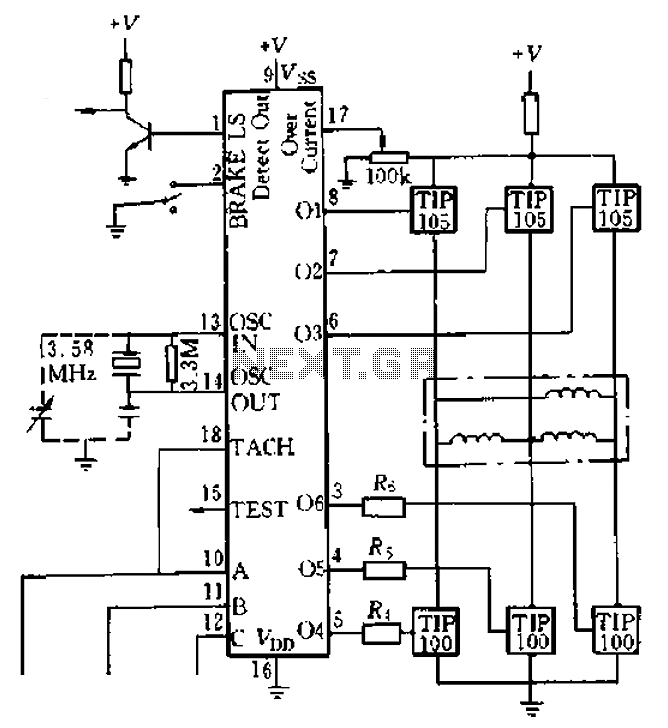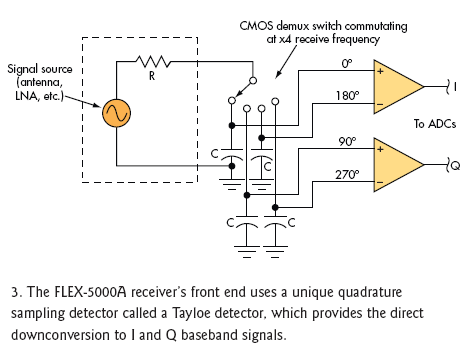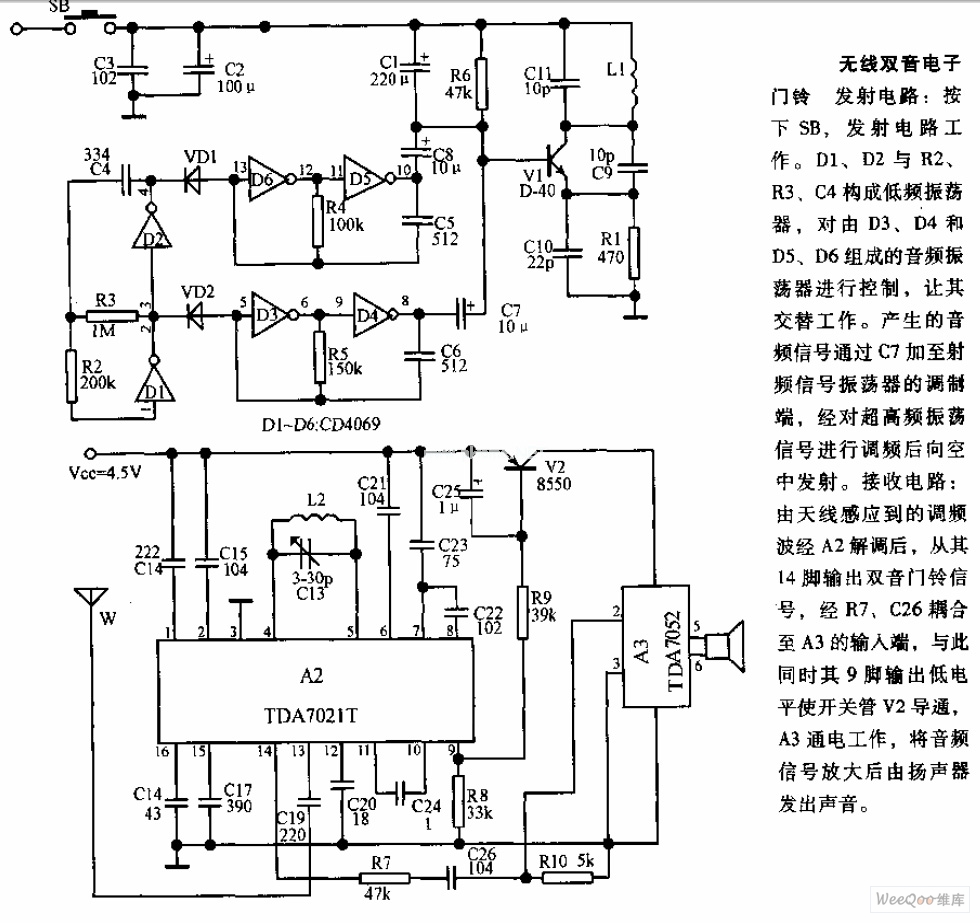
Inverter Circuit For Soldering Iron
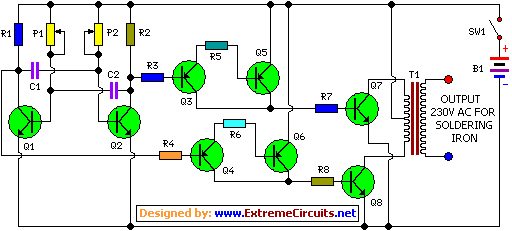
This is a simple and cost-effective inverter designed to power a small soldering iron (25W, 35W, etc.) in situations where a mains supply is unavailable. The circuit utilizes eight transistors.
The inverter circuit operates by converting DC voltage from a battery source into an AC voltage suitable for the operation of small soldering irons. The design typically consists of an oscillator stage that generates a square wave signal, which is then amplified and transformed into a higher voltage AC signal.
The use of eight transistors in the circuit serves multiple purposes. Firstly, they are arranged in a push-pull configuration to drive the transformer, which steps up the voltage to the required level for the soldering iron. The oscillator circuit is usually built using two transistors that alternate their conduction states, creating a square wave output. This output is fed into the base of the push-pull transistors, driving them into saturation and allowing current to flow through the primary winding of the transformer.
The transformer plays a critical role in this inverter design. It not only steps up the voltage but also provides isolation between the DC source and the AC output, enhancing safety during operation. The secondary winding of the transformer is connected to the soldering iron, delivering the necessary voltage and current for its operation.
Additional components may include resistors, capacitors, and diodes, which help stabilize the circuit, filter noise, and protect against voltage spikes. Proper heat dissipation mechanisms should be considered for the transistors, as they may generate significant heat during operation.
Overall, this inverter circuit is an effective solution for powering small soldering tools in environments without access to mains electricity, making it a valuable addition to portable soldering setups.Here is a simple but inexpensive inverter for using a small soldering iron (25W, 35W, etc) In the absence of mains supply. It uses eight transistors and a.. 🔗 External reference
The inverter circuit operates by converting DC voltage from a battery source into an AC voltage suitable for the operation of small soldering irons. The design typically consists of an oscillator stage that generates a square wave signal, which is then amplified and transformed into a higher voltage AC signal.
The use of eight transistors in the circuit serves multiple purposes. Firstly, they are arranged in a push-pull configuration to drive the transformer, which steps up the voltage to the required level for the soldering iron. The oscillator circuit is usually built using two transistors that alternate their conduction states, creating a square wave output. This output is fed into the base of the push-pull transistors, driving them into saturation and allowing current to flow through the primary winding of the transformer.
The transformer plays a critical role in this inverter design. It not only steps up the voltage but also provides isolation between the DC source and the AC output, enhancing safety during operation. The secondary winding of the transformer is connected to the soldering iron, delivering the necessary voltage and current for its operation.
Additional components may include resistors, capacitors, and diodes, which help stabilize the circuit, filter noise, and protect against voltage spikes. Proper heat dissipation mechanisms should be considered for the transistors, as they may generate significant heat during operation.
Overall, this inverter circuit is an effective solution for powering small soldering tools in environments without access to mains electricity, making it a valuable addition to portable soldering setups.Here is a simple but inexpensive inverter for using a small soldering iron (25W, 35W, etc) In the absence of mains supply. It uses eight transistors and a.. 🔗 External reference
